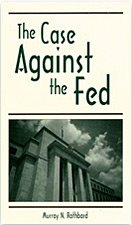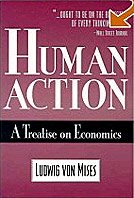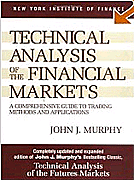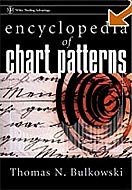More people realize they better take possession of their gold
By David Parkinson
The Globe and Mail, Toronto
Friday, March 20, 2009
In 1897, at the height of a major U.S. recession and banking crisis, a gold discovery on the Klondike River in Yukon Territory triggered one of the biggest gold rushes ever seen. Now, more than a century later, history is -- sort of -- repeating itself.
No, the world's downtrodden aren't beating a frenzied path to a harsh, remote swath of the Canadian north this time around. But the 2009 recession and banking crisis has set off a rush to invest in gold and other precious metals at unprecedented levels -- a move that has tightened the global supply/demand picture and helped push prices to record highs. And increasingly they are opting for the tangible comfort of physical gold -- actual gold bars and coins that they can cling to in troubled times.
"When the banking crisis hit [last fall], we saw an avalanche of demand," said James DiGeorgia, a Florida-based coin and precious metals dealer and editor of the Gold & Energy Advisor newsletter. "People are scared to death that all this debt [being taken on by governments] is going to debase the [U.S.] dollar and other currencies around the world."
Data from the World Gold Council show that while demand for gold for industrial, dental and jewellery purposes fell 10 per cent in 2008, net purchases of physical gold for investment purposes jumped 64 per cent to 1,091 tonnes. In the fourth quarter -- as the U.S. banking crisis reached new depths -- net gold investment volumes surged 182 per cent from a year earlier. As a result of the boom in investment demand, overall gold demand rose 4 per cent last year, further widening the annual supply shortfall in the gold market.
"These dramatic retail investment inflows reflect the extreme uncertainty that surrounds the global economy and financial system," the World Gold Council said. "In an environment where investors are more concerned about the loss of capital than they are about the return on capital, the absence of default risk or counterparty risk has been a key attraction for gold."
Experts say the soaring price for gold -- up 30 per cent since the end of October, at the same time the MSCI World stock index has lost almost 20 per cent -- has created a bandwagon effect for investment in precious metals. But behind that have been some legitimate concerns -- about global economic and financial market instability, and the possible inflationary ramifications of the rising government debts being incurred to rescue the world economy -- that have sent investors to gold as a stable safe haven for their money, and a way to diversify their portfolios away from other more risky asset classes.
Yesterday, gold for April delivery surged $69.70 (U.S.) to settle at $958.80 an ounce on the New York Mercantile Exchange.
Gold-backed exchange-traded funds -- an increasingly popular vehicle for gold exposure among retail investors -- increased their net purchases of gold by 27 per cent in 2008. But the most startling demand growth came from direct purchases of gold bars and coins by retail investors, especially in Europe and North America, where holding physical gold has never been nearly as popular as it is in many Eastern cultures and developing economies.
Western net retail gold purchases totalled 133 tonnes last year -- a sharp reversal from the moderate net sales of gold by Western retail investors in recent years. Meanwhile, gold hoarding among non-Western investors and gold coin purchases from government mints surged 60 per cent and 44 per cent, respectively, in the year.
"Especially in the industrialized countries, people are now buying precious metals for portfolio diversification," said Barry Wainstein, vice-chairman and global head of foreign exchange and precious metals at Scotia Capital Inc., a long-time provider of precious metals products to Canadian investors.
Canadian banks have long offered retail clients exposure to gold through gold-backed certificates, whose value is based on the spot price of gold (minus administrative fees) and can be exchanged by their holders for either cash or physical gold. The advantage is that investors don't need to worry about transport, storage, and insurance of physical precious metals.
Russell Browne, director of retail precious metals products at Scotia Capital, said volumes of RRSP-eligible gold-backed certificates have "more than doubled" in the past 18 months.
But in the past year many clients have been opting against certificates, in favour of the real thing. Some investors are even loading up on gold-industry-standard gold bars -- 400-ounce blocks valued at about $400,000 at today's prices.
"We now have retail investors buying multiple bars," Mr. Browne said. (Scotia sells gold bars ranging from one ounce to the 400-ounce standard.)
The rising demand for bars has prompted Scotia's precious metals arm, ScotiaMocatta, to ramp up its offerings of physical precious metals. In addition to its gold and silver products, ScotiaMocatta earlier this month introduced 1-ounce platinum and palladium bars for retail clients.
"In some cases, investors are more comfortable with owning physical precious metals than other financial instruments," Mr. Wainstein said.
The growing desire to hold precious metals in their physical form may be another side effect of investor distrust in the crisis-riddled global banking sector. Newsletter editor Mr. DiGeorgia suggested investors in the United States have become increasingly nervous about gold-backed investment certificates and even gold storage services at their banks, for fear their assets may not be entirely safe in the case of a bank failure.
"I always tell people to take physical possession of their gold," he said.
* * *
Labels: financial crisis, gold















![[Most Recent Quotes from www.kitco.com] [Most Recent Quotes from www.kitco.com]](http://www.kitco.com/images/live/t24_au_en_usoz_6.gif)
![[Most Recent Quotes from www.kitco.com] [Most Recent Quotes from www.kitco.com]](http://www.kitco.com/images/live/au_go_0030_ny.gif)
![[Most Recent Quotes from www.kitco.com] [Most Recent Quotes from www.kitco.com]](http://www.kitco.com/images/live/au_go_0365_ny.gif)
![[Most Recent Quotes from www.kitco.com] [Most Recent Quotes from www.kitco.com]](http://kitconet.com/charts/metals/silver/t24_ag_en_usoz_4.gif)

















0 ΣΧΟΛΙΑ (COMMENTS):
Post a Comment
<< Home